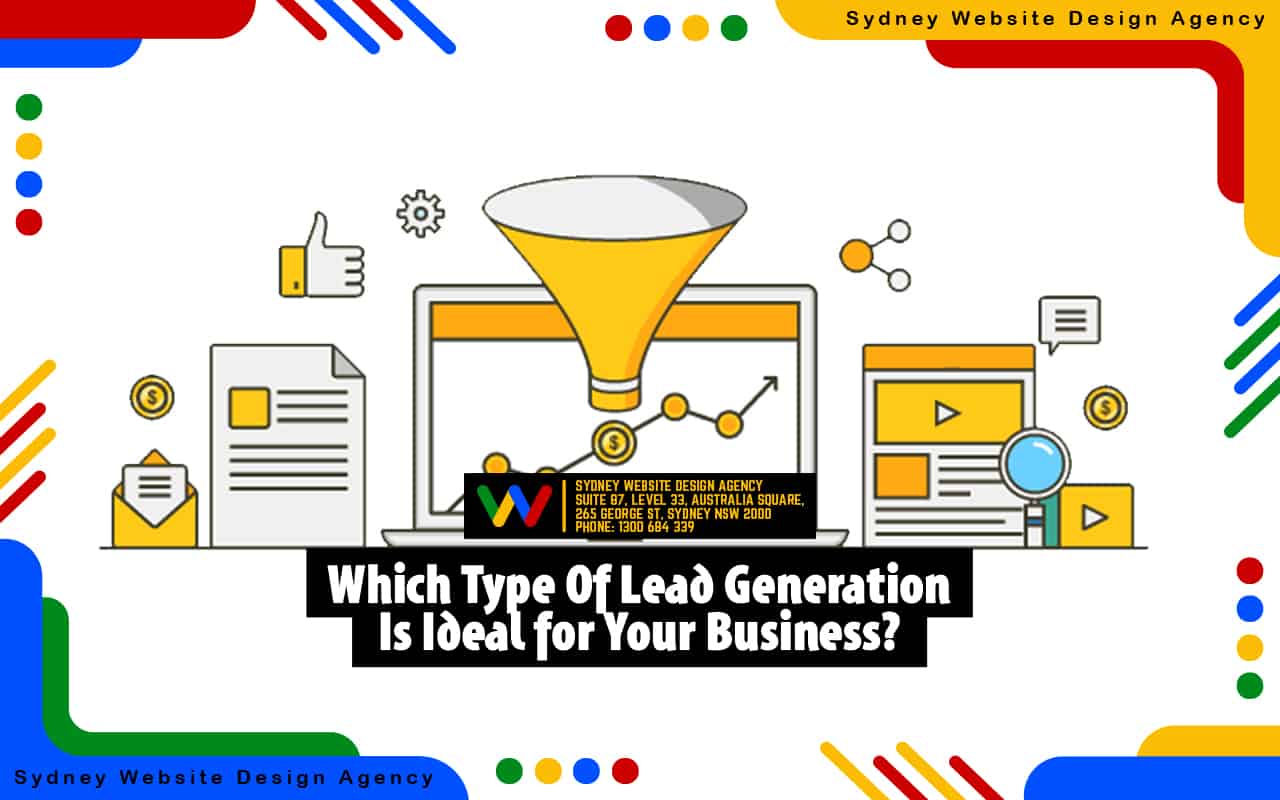How Lead Generation Shapes Your Business Success
Leads are customers who are interested in your product or service. However, not all leads turn into paying customers. Here is where lead generation comes into play. It is the process of generating leads for a brand intending to nurturing them to become paying and loyal customers.
The concept is quite simple. You gather X numbers of people through content marketing and advertising strategies, people who would likely go for your product or service. A portion of these leads will be interested in knowing your service or product even more and will go through your lead generation funnel. Others would simply go and find another service or product in the market.
Those X number of leads you generate initially are not all qualified leads. Some may end up as a customer, while others will move on to a different service or product. Thus, getting a regular number of leads somehow guarantees that you generate new customers for your business. It is not a one-time process and would require continuous efforts to be able to sustain the growth of your business.
How does a startup brand proceed with such strategies? What are the tools that they need to invest in to be able to get a regular stream of leads and customers to their company? Sydney Website Design Agency helps you through the process. But first, let’s learn more about what lead generation is and its role in marketing your business.
Introduction
Acquiring leads is an important aspect that directly affects the growth of a business. You need to be able to generate leads and nurture them into paying customers and clients if you wish to stay in business.
However, prospecting for clients can be quite difficult. Your competition is also doing the same effort to generate good leads and prospects for their business. You need to be able to locate a group of people that are genuinely interested in your product or service.
With the use of modern marketing tools and the right strategies in acquiring leads, even local small businesses can compete and generate a steady flow of leads and clients to their websites.
To help you get started in lead generation the right way, continue reading this blog.
Table of Contents
- What is Lead generation?
- Lead Generation’s Role in Marketing
- Improving Your Cash Flow with Lead Generation
- Which Type Of Lead Generation Is Ideal for Your Business?
- How Can Businesses Generate Leads
- Creating Multiple Channels for More Effective Lead Generation
- Is Lead Generation an Expensive Investment
- FAQs Lead Generation
- Importance of Lead Generation in Business
What is Lead Generation?

Lead generation is the process of attracting and converting strangers into prospects and customers. The act of acquiring potential customers usually starts with promotion schemes meant to create knowledge and preoccupation about a good or service. If an intrigued future buyer displays interest, extra measures may be taken to check the validity of the lead and turn them into someone who pays for your product.
Different industries have varying ways to generate leads, and what works best will depend on your sector, what you’re selling, or which services you offer. Some frequent lead-generation activities are content marketing, search engine optimisation (SEO), pay-per-click (PPC) advertising, email marketing campaigns, and social media outreach initiatives.
The most important thing to remember is that lead generation is a process, not a one-time event. It takes time and effort to attract leads and convert them into customers, so be patient and consistent with your lead-generation activities and in marketing qualified leads.
The internet is over-saturated with businesses fighting for the attention of both B2B and B2C consumers. How can your business stand out among all the noise?
Customers are now very adept at ignoring advertising methods and messages that don’t speak to them on a personal level or pertain to their needs, challenges, or opportunities.
Some of the most common lead-generation efforts modern businesses invest in today includes the following:
- one-on-one targeting
- Consistent and regular messaging across websites and other multiple channels
- Educating the customer through content
- Cultivating meaningful relationships with the target market
- Creating and managing a community
In current times, lead generation usually involves multiple departments within a company. The journey starts with marketing and then continues to the sales or business development department. If free trials are an option, software as a service business will also likely bring in product or service teams at some point during the process.
Lead Generation’s Role in Marketing

Traditionally, lead generation has been a responsibility of the Sales team. In the digital era, however, that responsibility is now shared between the Sales and Marketing team. The goal of lead generation remains the same: to identify potential customers and convert them into paying customers.
The difference lies in how leads are generated. In the past, businesses would typically use outbound marketing methods such as cold-calling, print advertising, or trade shows to generate leads. With the rise of the internet and digital media, businesses now have access to a vast array of inbound marketing tools that can be used to generate leads.
Some of the most common inbound lead generation activities include SEO, content marketing, PPC advertising, social media marketing, and email marketing.
Lead Generation Process Steps
There isn’t a lead generation process that works for every business, since each one is unique. However, the modern lead life cycle can be simplified into six steps:
Prospecting
TOFU marketing is focused on raising brand awareness and initial engagement from potential leads. This could include an inbound content strategy or using digital ads to reach a larger audience.
Generating Leads
The next step is to engage your prospects by communicating with them on a more personal level. This could be done with targeted email marketing or marketing automation campaigns. Gathering data on leads will make it easier to move them into the category of Marketing Qualified Leads (MQL).
Marketing Qualified Leads (MQL)
MQLs, or marketing qualified leads, are potential customers that the sales team should assess. To be an MQL, leads must usually demonstrate high engagement with the company and provide contact information. You can use systems like lead scoring to measure online activity on the website or engagement with email campaigns and social media posts.
Sales Qualified Leads (SQL)
SQLs, or qualified leads, are those that Sales has contacted and determined may turn into customers. Interactions with SQLs can include phone calls or emails. Once a lead has been determined to be an SQL, they are then passed on to Sales.
Sales Opportunity
Once we reach the Bottom of the Funnel, we are only left with interested potential customers. These leads have already developed a relationship with the business and could soon be finalised as an actual customer.
Conversion
Once you’ve turned a lead into a customer, the real work begins. After that, it is essential for Marketing and Sales to collaborate on continuing lead nurture strategies to guarantee they can maintain their current customers.
Improving Your Cash Flow with Lead Generation

The primary purpose of lead generation is to generate more sales and revenue for your business. However, a by-product of an effective lead generation process is improved cash flow.
Improved cash flow is one of the most significant advantages of lead generation because it allows businesses to invest in other areas of growth. With extra cash on hand, businesses can reinvest in their product or service, hire new employees, or expand into new markets. All of these activities will help businesses generate even more leads and sales in the future.
There’s no silver bullet when it comes to generating leads. However, there are a few things you can do to improve your chances of success:
Define Your Target Customer
The first step is to identify your ideal customer. Once you know who you’re targeting, you can create content and campaigns that are more likely to resonate with them.
Create Compelling Content
One of the best ways to generate leads is to create content that’s interesting and valuable to your target audience. This could be in the form of blog posts, e-books, infographics, or even podcasts.
Use Multiple Channels
Don’t put all your eggs in one basket when it comes to lead generation. Instead, use a variety of channels such as email marketing, social media, and PPC advertising to reach a larger audience.
Optimise Your Website for Lead Generation
Your website should be designed with lead generation in mind. Make sure your forms are easy to find and fill out, and that your calls-to-action are clear and compelling.
Track Your Results
Finally, it’s important to track the results of your lead generation efforts, so you can see what’s working and what’s not. This will help you fine-tune your strategy and make adjustments as needed.
Which Type Of Lead Generation Is Ideal for Your Business?

The two categories of lead generation are outbound and inbound. Outbound generally includes direct mail, advertising, cold calling, and email marketing. In contrast, outbound lead generation encompasses blogging SEO social media PPC.
Outbound Lead Generation
Outbound lead generation is a more traditional, proactive approach. In this method, businesses initiate contact with potential customers through various means in an effort to generate leads. The goal of outbound lead generation is to reach as many people as possible in the hope that some will eventually become customers or clients.
Inbound Lead Generation
Inbound lead generation is a more modern, reactive approach. In this method, businesses create content (such as blog posts, ebooks, infographics, etc.) that is interesting and valuable to their target audience. By creating this type of content, businesses attract people to their website who are then potential leads. The goal of inbound lead generation is to attract as many qualified leads as possible so that sales and marketing can further qualify them and turn them into customers or clients.
Outbound lead generation can be effective, but it can also be very time-consuming and expensive. Inbound lead generation is usually more cost-effective and efficient, which is why it’s the more popular method among businesses today. However, there is no one-size-fits-all solution when it comes to lead generation; what works for one business might not work for another. It’s important to experiment with different methods to see what works best for your business.
Now that you know a little more about lead generation, it’s time to decide which type of lead generation is right for your business. Here are some things to consider:
Are you selling products or services?
If you’re selling products, then affiliate marketing and ecommerce might be the best option for you. If you’re selling services, then lead capture forms and email marketing could be better suited for your needs.
Do you have a large budget?
Affiliate marketing and paid advertising can be expensive, so if you’re working with a limited budget, they might not be the best option for you. Lead capture forms and email marketing, on the other hand, are relatively inexpensive and can still be effective.
Do you have a lot of time?
Affiliate marketing and paid advertising can be time-consuming, so if you don’t have a lot of time to devote to lead generation, they might not be the best option for you. Lead capture forms and email marketing, on the other hand, are relatively easy to set up and can be done in a relatively short amount of time.
What’s your goal?
Finally, it’s important to consider what your goal is with lead generation. If you’re looking for quick results, then paid advertising might be the best option for you. If you’re looking for something that’s more long-term, then lead capture forms and email marketing could be better suited for your needs.
No matter which type of lead generation you choose, the influential thing is to start generating leads today. The sooner you start, the sooner you’ll see results.
Lead generation is a critical part of any business’s sales and marketing efforts. By generating more leads, you can increase sales and revenue for your business. However, lead generation is not a one-time effort; it’s an ongoing process that should be incorporated into your overall sales and marketing strategy.
There are several ways to generate leads, so it’s important to find the method that works best for your business. Once you’ve found a method that works, stick with it and continually fine-tune your strategy to ensure maximum success.
How Can Businesses Generate Qualified Leads

There are a number of different ways businesses can generate leads. Some common methods include:
Direct mail
This involves sending physical mail (such as postcards or brochures) to potential customers in an effort to generate leads.
Advertising
This includes paid advertising through channels such as television, radio, print, or online.
Cold calling
This involves making phone calls to potential customers in an effort to generate leads.
Email marketing
This involves sending emails to potential customers in an effort to generate leads.
Lead capture forms
This involves using forms on your website (such as contact forms or sign-up forms) to collect information from potential customers who are interested in your products or services.
Content marketing
This involves creating and distributing content (such as blog posts, ebooks, infographics, etc.) that is interesting and valuable to your target audience. The goal is to attract potential customers to your website so that they can become leads.
Social media
This involves using social media platforms (such as Facebook, Twitter, or LinkedIn) to connect with potential customers and generate leads.
Pay-per-click (PPC) advertising
This involves running ads on search engines or social media platforms and paying for each click that your ad generates.
Creating Multiple Channels for More Effective Lead Generation

The most effective lead generation strategy is to use a combination of multiple channels. By using a mix of channels, businesses can reach the widest possible audience and increase their chances of generating leads.
Some businesses focus on one or two channels, but the most successful businesses use a mix of several channels. For example, a business might use direct mail to generate leads, but they might also use PPC advertising or email marketing to supplement their direct mail campaigns.
It’s important to experiment with different channels to see what works best for your business. The key is to find a mix of channels that work together to generate the most leads possible.
Is Lead Generation an Expensive Investment

Lead generation can be an expensive investment, but it doesn’t have to be. There are a number of ways businesses can generate leads without breaking the bank.
Some businesses opt for free lead generation strategies, such as content marketing or social media. While these methods can be effective, they often take longer to generate leads than paid methods.
The average investment for lead generation varies depending on the methods used or the marketing team you are working with. For example, PPC advertising can cost a few dollars per click, while direct mail can cost a few hundred dollars per campaign. The cost of lead generation is not exact since you have plenty of factors to consider. From the type of lead generation strategy to how long you plan to execute it. However, a successful lead generation strategy is not gauged by the amount you invest, but by the efforts that you put into your marketing channels and sales funnel.
The key is to find an investment that fits your budget and your needs. If you’re working with a limited budget, free lead generation methods might be a suitable option. However, if you require leads quickly, paid methods might be a better option.
No matter what your budget is, there are lead generation methods that can work for you. The key is to find the right method (or combination of methods) and invest the time and money necessary to make it successful.
Paid lead generation methods, such as PPC advertising or direct mail, can be pricier, but they usually generate leads faster. The key is to find a balance that works for your business; if you require leads quickly, you might want to invest in paid lead generation methods, but if you’re working with a limited budget, free methods might be a better option.
Lead Generation Frequently Asked Questions

What
Importance of Lead Generation in Business

You need to constantly bring in new potential buyers and interest them in your product or service if you want your business to keep growing. You should have a regular stream of people coming in who are curious about what you offer.
Lead generation is influential for businesses because it allows them to find new customers and grow their sales. There are many ways businesses can generate leads, and the best way is the one that works best for your business. To find new customers and grow your sales, invest in lead generation.




















































